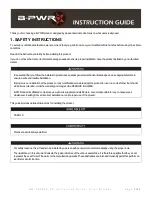
67
In describing NAT routing, it’s important to understand the concept of ports. These are numbers, like the source and
destination IP addresses that are attached to each packet. They further qualify which application on a computer (or
codec) is meant to send or receive a packet.
In a typical codec application, Codec X will send a packet from Address A Port B, to Address C Port D on the
Destination Codec Y. A codec that has multiple applications running (like streaming audio while simultaneously
serving a configuration web page) would deliver these applications from, and to, different port numbers, but
perhaps to the same IP address. Port numbers are also used by NAT routers in segmenting applications flowing
through them and they may change source port numbers at will.
Network Address Translation (NAT) refers to the ability of a router to translate requests from computers (or codecs)
within its LAN onto the public internet. On its most basic level, this involves replacing the private “source” or return
IP address in each packet with the true public IP and remembering where that packet was sent. This insures that
any response can be forwarded back to the proper device.
A good way to think of this is that an outgoing packet “punches a hole” in the router, through which authorized
reply packets may be returned to the codec for a limited time.
Содержание ACCESS 2USB
Страница 1: ...Product Manual ...
















































